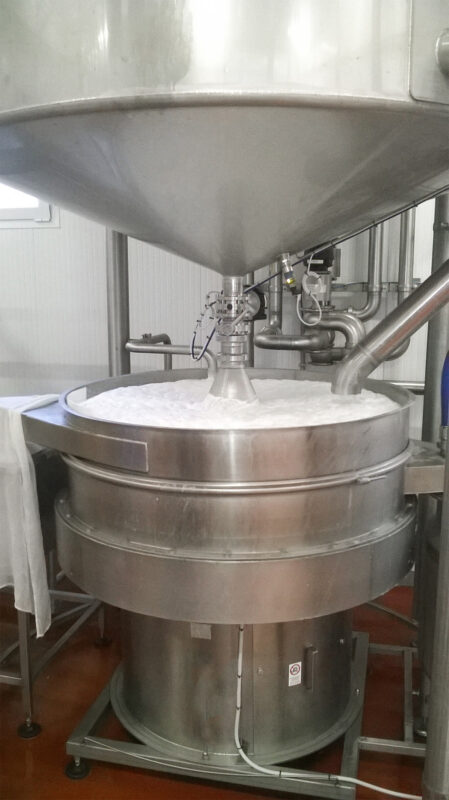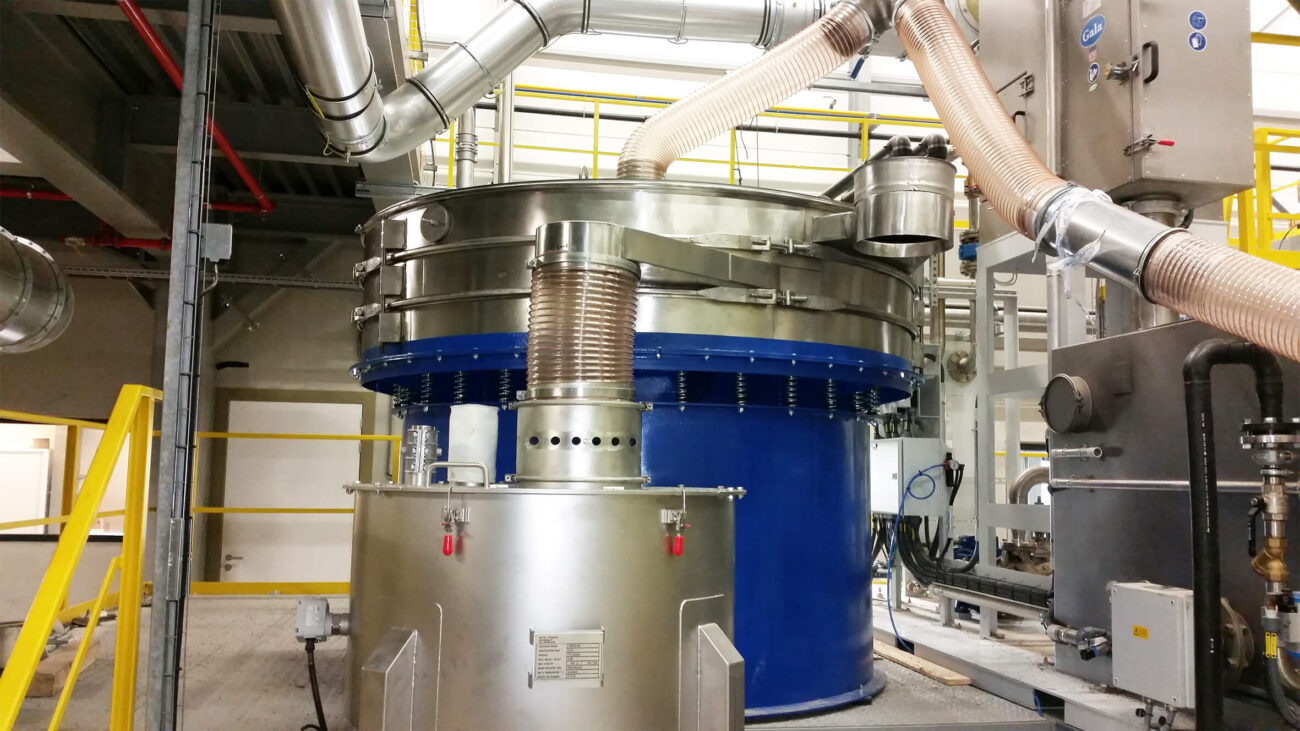1. Introduction: Precision Matters in Powdered Food Production
The global demand for spices and powdered food products—such as turmeric, chili powder, flour, starches, and seasoning blends—is booming. These products are integral to culinary traditions, processed foods, and ready-to-eat meals worldwide.
However, processing fine powders comes with unique challenges. Ensuring consistent particle size, removing impurities, and preventing contamination are critical to achieving high-quality, export-grade products.
Modern vibrating screens play a crucial role in spice and powdered food processing. Unlike static sifters, they deliver precise separation, efficient dust removal, and high throughput, making them indispensable for food processors aiming for quality, safety, and efficiency.

2. Common Challenges in Spices & Powdered Food Processing
Despite technological advances, processors face persistent challenges when handling fine powders:
- 🌶 Foreign contaminants like stems, fibers, stones, or packaging residues
- 🌫 Dust and fines, which affect flavor balance, mixing uniformity, and packaging accuracy
- ⚖️ Particle size uniformity, critical for product performance and customer expectations
- 🧪 Moisture-related clumping that causes mesh blinding and irregular flow
- 🏭 High-capacity screening requirements in industrial-scale production lines
- 🍃 Hygiene and cross-contamination control between different batches or products
Traditional manual sieving or rotary sifters often cannot meet modern hygiene standards or capacity demands. Vibrating screens offer a more robust, hygienic, and accurate alternative.
3. How Vibrating Screens Improve Spice & Powdered Food Processing
a. Precision Particle Size Control
Different spice powders require different mesh sizes to achieve the desired texture and flowability. Multi-deck vibrating screens allow processors to classify powders into fine, medium, and coarse fractions simultaneously, ensuring uniformity.
b. Efficient Impurity Removal
Screens remove unwanted stems, threads, and oversized particles early in the process, protecting downstream equipment and improving product quality.
c. Dust Control & Air Classification
Specialized vibrating screens with dust covers and integrated extraction systems keep processing areas clean, improve worker safety, and ensure consistent flavor concentration by removing excess fines.
d. Hygienic & Gentle Handling
Food-grade stainless steel, smooth surfaces, and gentle vibrations ensure no product degradation or flavor loss, which is especially important for aromatic spices.
e. Moisture & Flow Management
Optional ultrasonic deblinding or anti-clogging systems prevent screen blockages caused by slightly moist or sticky powders, maintaining consistent throughput.

4. Typical Applications in Spice & Powder Processing
| Processing Stage | Screening Objective | Recommended Screen Type |
|---|---|---|
| Raw Spice Cleaning | Remove stems, stones, packaging residues | Circular vibrating screen |
| Grinding Output Screening | Separate coarse particles & control final powder fineness | Fine mesh linear vibrating screen |
| Blending & Mixing | Eliminate lumps, ensure uniform distribution | Circular or ultrasonic screen |
| Dust Removal & Air Cleaning | Remove fines to improve flavor balance and packaging quality | Enclosed vibrating screen system |
| Pre-Packaging Quality Check | Final inspection for size and impurities | High-precision vibrating screen |
Integrating vibrating screens at each stage ensures consistent powder quality, less downtime, and better hygiene control.
5. Technological Innovations for Powder Screening
Modern food-grade vibrating screens feature several innovations tailored to powdered products:
- Ultrasonic deblinding to keep fine mesh clean during high-frequency screening
- CIP (Clean-In-Place) systems for quick sanitation between batches
- Dust-tight enclosures with vacuum extraction for clean operations
- Frequency & amplitude controls to handle different powder characteristics
- Modular designs that fit seamlessly into existing processing lines
These features make vibrating screens both efficient and compliant with strict food safety regulations.
6. Case Example: Upgrading a Spice Processing Line
A spice processor in South Asia replaced manual sieves with two stainless steel vibrating screens for post-grinding and pre-packaging stages. Results within three months:
- 🌿 98% impurity removal compared to 80% previously
- ⚖️ Uniform powder size distribution improved packaging accuracy and blending consistency
- ⏱ 40% reduction in manual labor through automation
- 🌫 Significant dust reduction, improving worker safety and hygiene compliance
The upgrade not only improved product quality but also reduced waste and increased production speed.

7. Future Trends: Smart Screening & Automation in Food Processing
The food industry is rapidly adopting smart technologies, and spice processing is no exception. Future developments include:
- IoT-enabled sensors for real-time mesh performance monitoring
- Predictive maintenance to reduce unscheduled downtime
- AI-assisted quality control using image recognition and vibration data
- Energy-efficient drives that lower operating costs
- Automated cleaning systems to reduce cross-contamination risks
These innovations are transforming screening into an intelligent, self-optimizing process that improves both quality and sustainability.
8. Conclusion
In spice and powdered food processing, precision screening is a critical step that directly impacts product quality, hygiene, and profitability. Vibrating screens provide superior particle size control, impurity removal, dust management, and operational efficiency, outperforming traditional sifters.
For processors looking to scale production and meet international quality standards, upgrading to advanced vibrating screening technology is a strategic investment that yields immediate and long-term benefits.
